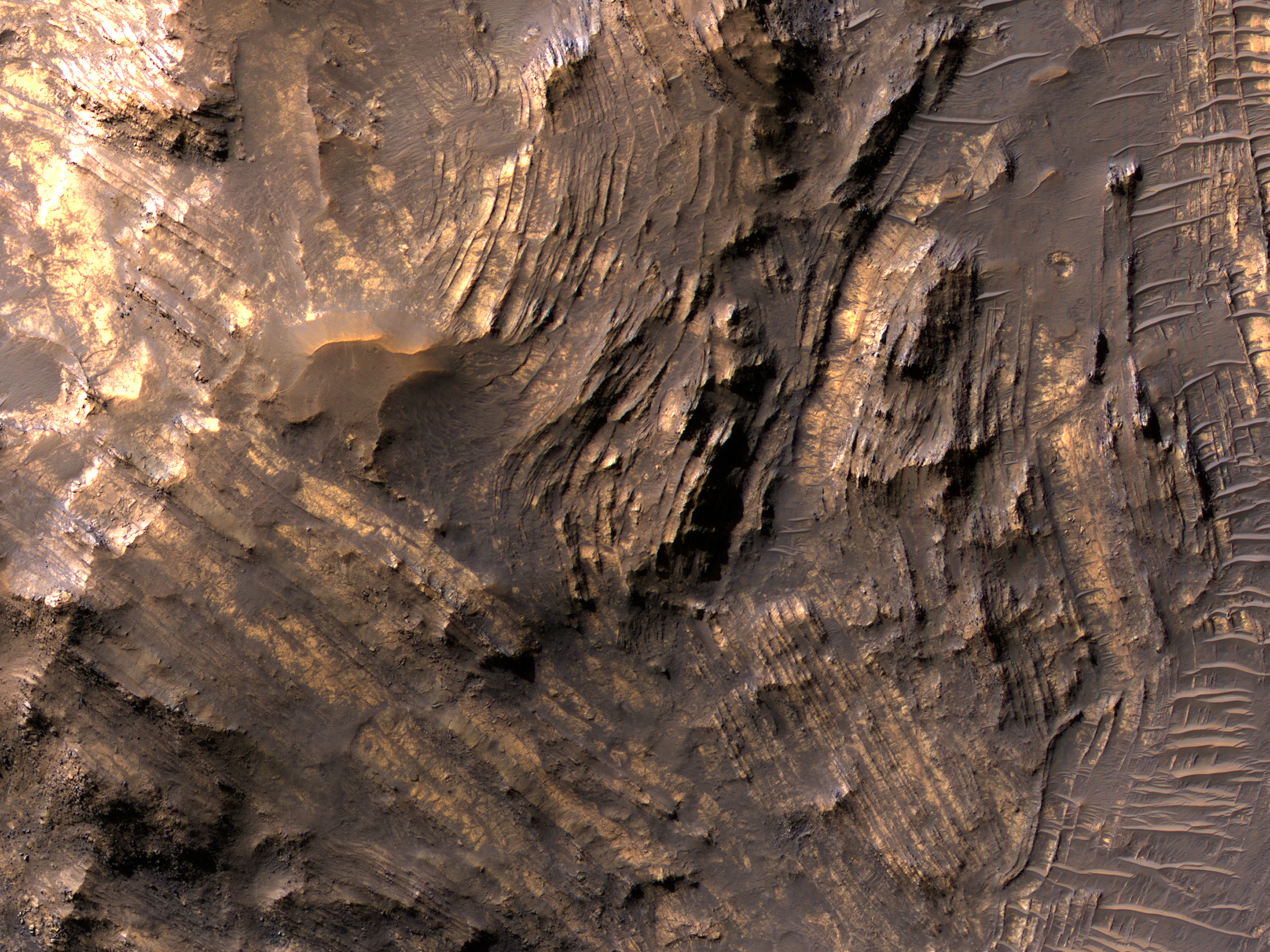The road to the top involves challenges along the way and the higher you move, the knowledge acquired throughout your journey becomes more abundant and priceless. Such is the case with complex impact craters whose central structures struggle their way from deep within the subsurface to rise higher and higher. As they peek out through the surface, they give us a snapshot of the intense stresses and temperatures they were subjected to, in their path to see the sky.
However, not all of these crater central structures have sufficient strength to maintain a peak so they collapsing inwards upon loss of all their energy, forming a central pit or depression. Such is the case with the uplift of the
32-kilometer diameter Betio Crater, located south of Valles Marineris.
This HiRISE color composite cutout shows a part of the central depression in Betio.
The presence of tilted light-toned layers at the base of the central depression suggests that bedrock may have been initially uplifted but later collapsed to form a pit. The image also shows how the layers rotated, deformed and competed with each other to be a part of the central structure we observe today.
ID:
ESP_016805_1565date: 25 February 2010
altitude: 254 km
https://uahirise.org/hipod/ESP_016805_1565
NASA/JPL-Caltech/University of Arizona
#Mars #science #NASA
